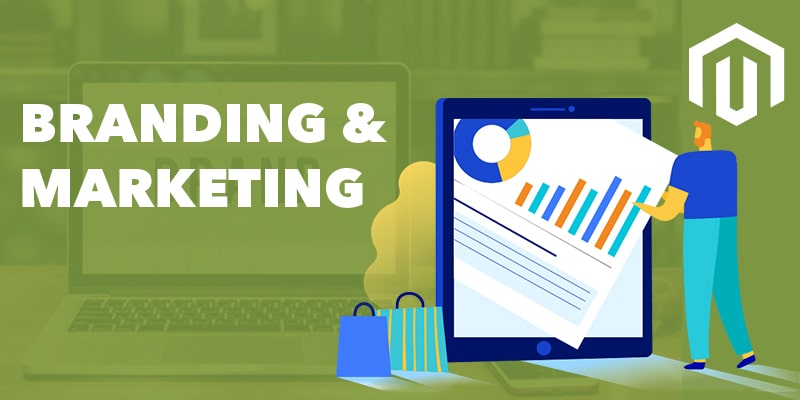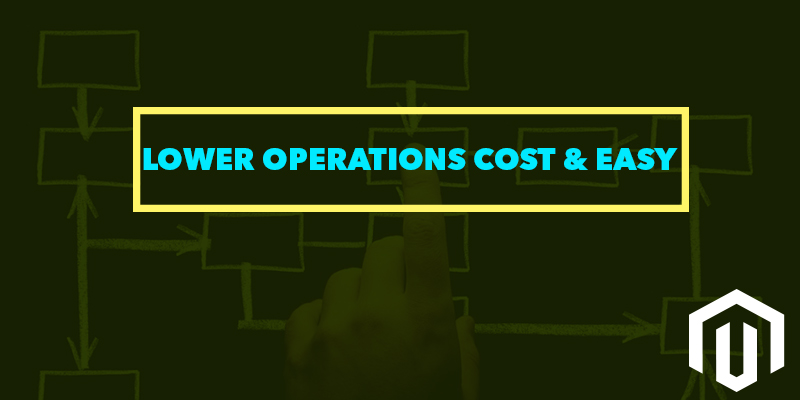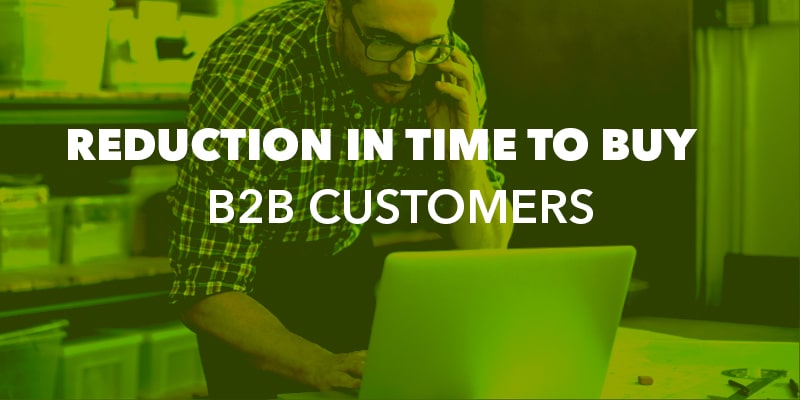No company is now isolating its business to only a single set of customers- either consumers or businesses. With the rapid and dynamic changes in the business environment, more and more companies are nowadays, selling to both customers and businesses. Companies that are manufacturing products or selling them to large enterprises can reap the benefits of economies of scale and yield huge margins selling directly to consumers against just selling products to companies at a bulk discount.
Let’s understand this better with an example. Take a manufacturer. They are the best practical cases of selling both to customers and businesses. They usually cannot sell enough directly to consumers to generate ample sales or rely solely on B2B sales.
With the rise of the digital era and consumers’ preference for online shopping, sellers, whether manufacturers or retailers are shifting their focus to eCommerce. This opens up the doors for their products and services to both customers and businesses. Earlier, there would be different eCommerce sites for B2B and B2C operations. However, with the growth in eCommerce development, sites now have a unified dashboard for both B2B and B2C sides.
Nonetheless, having an eCommerce site is one thing, and developing one with the perfect eCommerce platform is a completely different ball game. In such a dilemma, the Magento eCommerce development platform is your best choice.
Keeping in mind the benefits of having a unified eCommerce site for B2B and B2C operations, and also touching base with Magento, Nevina Infotech has prepared this article for you to grasp the concept fully. Let’s read on to know some of the major reasons why it’s good to have a unified eCommerce site.
What are B2B and B2C eCommerce Websites?
Before getting information in deep about the advantages of a unified platform, let’s briefly differentiate between B2B and B2C e-commerce:
B2B E-commerce:
As the name suggests Business-to-business e-commerce transactions are done between businesses. This includes wholesalers selling to retailers, manufacturers selling to distributors, and other business-related transactions. B2B e-commerce platforms typically focus on bulk orders, negotiation features, and tailored pricing.
B2C E-commerce:
Business-to-consumer e-commerce caters to individual consumers. It encompasses online retail, where businesses sell products directly to end-users. B2C platforms prioritize user-friendly interfaces, personalized shopping experiences, and various payment options.
Retail E-Commerce Software Market Poised for Big Move
The Shift Towards Unified eCommerce Website
In recent years, people have been moving towards e-commerce platforms which is a noticeable change. Here are several compelling reasons behind this trend:
Streamlined Operations:
Managing separate B2B and B2C platforms can be complex and resource-intensive. A unified platform streamlines operations, reducing the need for duplicated efforts in website development, maintenance, and marketing.
Cost Efficiency:
A single e-commerce platform saves costs associated with website development, hosting, and maintenance. It also simplifies the marketing budget, as you can focus on a single website for both customer segments.
Improved
Customer Experience:
A unified platform allows for consistent branding and user experience across B2B and B2C channels. Customers can without much of a stretch switch somewhere in the range of B2B and B2C modes, guaranteeing an adaptable encounter to them.
Cross-selling Opportunities:
A unified platform enables cross-selling opportunities.B2B clients might find B2C items they need for their organizations, while B2C clients might track down items with B2B applications.
Personalization:
A unified platform allows for advanced personalization. You can tailor item proposals, valuing, and content given client profiles, whether they are B2B or B2C clients.
Benefits for B2B Customers
We should dig further into the benefits a brought together internet business stage offers to B2B clients:
Streamlined Procurement:
B2B customers can access all their procurement needs from a single source, simplifying the purchasing process. They can place bulk orders, negotiate prices, and track shipments with ease.
Custom Pricing:
Unified platforms often feature custom pricing models. B2B customers can log in, view negotiated pricing, and receive quotes specific to their contracts.
Account Management:
B2B customers benefit from advanced account management tools, such as multiple user accounts, role-based access, and spending limits. These features enhance control and accountability within organizations.
Order History and Reporting:
Unified platforms provide comprehensive order history and reporting functionalities. B2B customers can access past transactions, track spending, and generate reports for accounting purposes.
Efficient Reordering:
B2B customers can easily reorder products, saving time on repetitive purchases. This convenience encourages repeat business.
A/B Testing for Progressive Web Apps – Implement Effectively
Benefits for B2C Customers eCommerce Websites
Now, let’s explore how a unified e-commerce platform enhances the B2C customer experience:
1. Wide Product Range:
B2C clients get close enough to a more extensive item range They can explore products designed for B2B use, often of higher quality and with unique features.
2. Flexible Shopping:
Unified platforms offer flexibility in shopping. B2C customers can switch to B2B mode if they require bulk purchases for personal or small business use.
3. Personalized Recommendations:
B2C customers can enjoy more personalized shopping experiences. Algorithms can suggest products based on previous purchases, preferences, and browsing history.
4. Order Tracking and Returns:
B2C customers benefit from order tracking and return management tools, enhancing transparency and customer satisfaction.
5. Consistent Branding:
Unified platforms maintain consistent branding and messaging, reinforcing trust and loyalty among B2C customers.
Unified Catalog Management for B2B and B2C eCommerce Websites

A single eCommerce site simplifies the tasks of managing the two catalogs of products for B2B and B2C eCommerce. A quick tip would be to turn on or off certain products for either B2B or B2C users. Make sure you hire Magento developer in India to seamlessly connect your B2B and B2C functions on your Magento e-store.
You won’t have to worry about updating your product catalog separately. You can simply upload your list of products on a single site. The same applies if you’re also integrating your store with other marketplaces. The incoming orders from multiple places can be fulfilled easily from one unified store. Even your inventory is kept securely on one site rather than handling two, which might lead to errors.
Simpler Branding and Marketing

This is one of the key advantages of having only one site. You have only one brand and image to showcase. This does not create any confusion as to which direction the marketing and promotional efforts need to take. Another aspect is that by having only one eCommerce site, you can save a ton of money in marketing and advertising costs that would be associated with two sites. This also reduces any confusion in the minds of the customers on which site they should visit.
Lower Operations Cost and Easy Operations

The technical work that goes into operating an eCommerce site is doubled with two separate sites. Having a unified B2B and B2C site reduces the amount and costs of operations needed. The investment is focused on one site, and ROI is improved by selling to both customers and businesses. Having one site makes operations easier, as well. Once your site is ready, you need to integrate certain tools such as CMS, ERP, and other tools into only one site instead of two. Ultimately, your integrations and systems are consolidated into one place.
Reduction in Time to Buy for B2B Customers

Businesses are extremely particular when they are buying and selecting products. A unified site makes the B2B process similar and simplified, just like the B2C purchase process. This allows businesses to search and buy products faster and significantly improves their experience on the site. A unified website allows brands to provide a consumer-like shopping experience with a few additional options such as better pricing, and invoices for B2B customers.
Improved Shopping Experience

Having a dedicated eCommerce site for both B2B and B2C sales is useful in channeling your efforts towards creating the optimum shopping experience for potential customers. Generally, it is consumers who get a better shopping experience than businesses. However, a unified site will enable you to provide the best online shopping experience for both sets of clients.
Step-by-step instructions to Carry out a brought-together Web-based business Stage
Carrying out a bound together B2B and B2C online business stage requires cautious preparation and execution
Here are the steps to consider:
Assessment:
Evaluate your current e-commerce platforms, business goals, and customer segments to determine if unification is suitable.
Platform Selection: Pick a web-based business stage that upholds both B2B and B2C functionalities. Popular options include Magento, Shopify Plus, and WooCommerce.
Integration:
Integrate your existing systems, such as CRM, ERP, and inventory management, to ensure seamless data flow between B2B and B2C channels.
Customization:
Tweak the stage to meet the particular requirements of both B2B and B2C clients.
Testing:
Completely test the brought-together stage to guarantee all elements work
Factors to Consider Before Unifying B2B and B2C eCommerce Websites:
Binding together B2B and B2C online businesses, while invaluable, requires cautious thought of a few elements:
Business Goals:
Start by adjusting unification to your business goals. Ensure that serving both B2B and B2C customers simultaneously complements your strategic goals.
Audience Segmentation:
Grasp the particular requirements and assumptions for your B2B and B2C clients. Tailor your unified platform to cater to their unique preferences.
Technology Compatibility:
Assess the compatibility of your existing systems and technologies with a unified platform. Integration with CRM, ERP, and inventory management systems may be necessary.
Data Security:
Safeguard sensitive data, especially in B2B transactions. Implement robust security measures to protect customer information, pricing data, and order history.
Pricing and Product Strategy:
Develop pricing structures that accommodate both customer segments. Consider volume-based discounts for B2B customers while offering product recommendations for B2C users. Design an intuitive interface that allows users to switch between modes effortlessly.
Regulatory Compliance:
Ensure compliance with relevant regulations, particularly in B2B transactions, which may involve complex contracts and legal considerations.
Scalability:
Plan for scalability to accommodate growth in both customer segments. Anticipate increased traffic, transactions, and data volume.
Magento PWA Compatibility
Challenges in Implementation and How to Address Them:
While bringing together B2B and B2C online business offers various advantages, it accompanies its portion of difficulties:
Complexity of Integration:
Coordinating different frameworks and databases can be complicated. To address this, engage experienced IT professionals who specialize in e-commerce integration. Choose platforms and tools that facilitate smooth data flow.
User Experience Consistency:
Keeping a steady client experience for both B2B and B2C clients can challenge. Employ responsive design and thorough testing to ensure that users seamlessly transition between modes.
Data Security Risks:
Unifying platforms may pose security risks due to increased access points. Implement robust cybersecurity measures, conduct regular audits, and educate employees on security best practices.
Customization Complexity:
Customizing the platform to cater to the unique needs of B2B and B2C customers can be intricate. Leverage modular design principles that allow for flexible customization without compromising the core system.
Resource Allocation:
Allocating resources for unification can strain budgets and manpower. Create a comprehensive project plan with a clear budget, timelines, and resource allocation to ensure successful implementation.
Change Management:
Employees may require training and support to adapt to the unified platform. Effective change management strategies, including training programs and user guides, can mitigate resistance.
Customer Communication:
Communicate the changes to your B2B and B2C customers transparently. Provide clear instructions on how to navigate the unified platform and offer responsive customer support.
Conclusion

The advantages of having a unified B2B and B2C eCommerce site are many. These are only a few points that we thought to share with you. As mentioned earlier, there are several eCommerce development platforms on which you can build your site. If you choose Magento, then hire Magento developer online to give you the best access and resources for creating your eCommerce store. As the virtual marketplace is upending the rules of buying and selling, it is believed that brands with a unified eCommerce site catering to both customers and businesses have a greater chance of survival and success.



